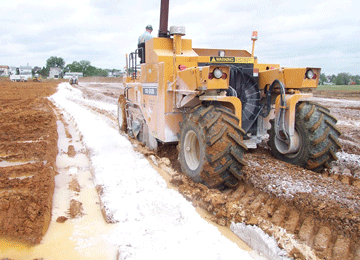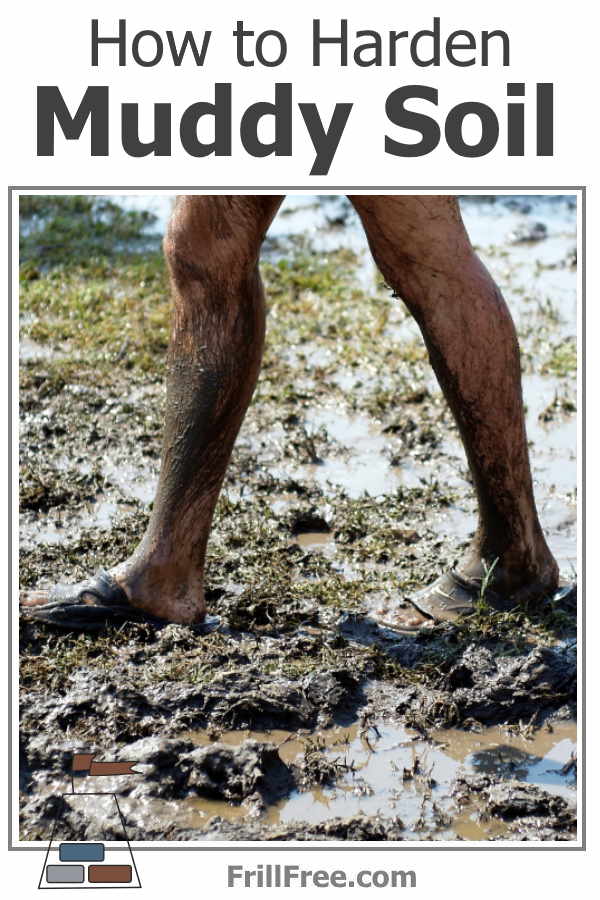To harden muddy soil, mix in sand or gravel to improve drainage. You can also incorporate organic matter like compost for better structure.
Muddy soil can be a challenge for gardeners and landscapers alike. Wet conditions often lead to poor drainage, making it difficult for plants to thrive. Compacted, muddy soil can hinder root growth and contribute to erosion. To create a more stable environment, it’s essential to take proactive measures.

Credit: m.youtube.com
Hardening muddy soil not only supports plant health but also improves overall garden aesthetics. Simple techniques can transform your garden into a flourishing space. By understanding the best practices for enhancing soil quality, you can ensure your plants receive the nutrients they need while maintaining proper drainage. Let’s explore effective methods to achieve this goal.
How to Harden Muddy Soil : Step by Step Guide
Introduction To Soil Hardening
Soil hardening is important for many reasons. Muddy soil can cause problems for plants and structures. Firm ground is easier to walk on and work with. It prevents issues like erosion and water pooling. Hard soil allows for better root growth in plants.
Benefits of a firmer ground include better drainage and stability. Strong soil reduces compaction, which helps plants thrive. It also supports construction projects, making them safer. Overall, hardening soil improves both the environment and infrastructure.
Identifying Muddy Soil
Muddy soil has some clear characteristics. It often feels sticky and wet. This type of soil can easily lose its shape. You might see puddles forming on the surface.
Several common causes lead to soil muddiness. Heavy rainfall can saturate the ground quickly. Poor drainage systems can trap water in the soil. Compacted soil limits water absorption, making it muddy. Frequent foot traffic also contributes to muddy conditions.
Basic Principles Of Soil Hardening
Understanding soil composition is key to hardening muddy soil. The mix of sand, silt, and clay affects how soil behaves. Sandy soils drain well but hold less moisture. Clay soils retain water but can become very muddy.
Soil structure also matters. Well-structured soil allows air and water to flow. Poor structure leads to compacted, muddy areas. Adding organic matter can improve soil structure.
Drainage plays a vital role in soil stability. Good drainage helps prevent water from pooling. Poor drainage can lead to erosion and muddy patches. Installing drainage systems or using drainage tiles can help.
To summarize, focus on soil composition and structure. Ensure proper drainage to create a firmer soil base. This approach will help in hardening muddy soil effectively.

Credit: www.ecslimited.com
Improving Drainage
Improving drainage in muddy soil is very important. Installing drainage systems can help a lot. These systems carry water away from the area. They can be French drains, drainage tiles, or dry wells. Each system has its own benefits.
Natural methods for enhancing drainage also work well. Adding organic matter improves soil structure. This helps water flow better. Planting deep-rooted plants can also assist with drainage. Their roots create channels for water to escape.
| Method | Description |
|---|---|
| French Drains | Systems of perforated pipes that redirect water. |
| Drainage Tiles | Underground pipes that help remove excess water. |
| Organic Matter | Adds nutrients and improves soil texture. |
| Deep-Rooted Plants | They create pathways for better water drainage. |
Organic Amendments For Soil Structure
Organic amendments improve the structure of muddy soil. They help with drainage and aeration. Several types of organic matter can enhance soil quality. Common options include compost, manure, and leaf mold. Each type adds nutrients and helps retain moisture.
Application techniques vary based on the type of organic matter used. Compost can be mixed into the soil. Spread it evenly and till it well. Manure should be well-rotted before use. Apply a thin layer on the surface. Leaf mold can be scattered around plants. It protects roots and maintains moisture.

Credit: www.truegridpaver.com
Utilizing Geotextiles And Soil Stabilizers
Geotextiles are useful materials for improving muddy soil. They help separate soil layers. This prevents mixing and keeps the ground stable.
Benefits of geotextiles include:
- Increased stability for construction projects.
- Improved drainage by allowing water to pass through.
- Reduced erosion by holding soil in place.
- Cost-effective solution for long-term soil issues.
Soil stabilizers work by binding soil particles together. They create a stronger foundation. This reduces muddy conditions in wet areas.
These stabilizers can be liquid or powder. They mix easily with soil. Once applied, they enhance the soil’s strength and durability.
Physical Methods For Soil Hardening
Compaction techniques help to make muddy soil stronger. Use tools like a plate compactor or a rammer. These tools push down soil to reduce air pockets.
The use of gravel and sand can improve soil strength. Mixing these materials with soil creates a better base. Gravel helps with drainage, while sand adds stability. Together, they make the soil less muddy.
| Material | Benefits |
|---|---|
| Gravel | Improves drainage and reduces mud |
| Sand | Adds stability and prevents clumping |
Maintenance And Monitoring
Regular checks for drainage efficiency are essential. Look for pooling water after heavy rains. This indicates poor drainage. Adjust the soil if needed. Make sure water moves away from plants.
Adding more amendments should happen when soil feels too compact. Test soil moisture regularly. If it remains soggy, consider adding organic matter. This helps improve soil structure.
Use compost or sand to enhance drainage. Mixing these materials can improve soil health. Regularly monitor soil conditions to ensure optimal growth.
Frequently Asked Questions
How Can I Improve Muddy Soil Drainage?
To improve muddy soil drainage, consider adding organic matter like compost. This helps to break up compacted soil and enhances aeration. Additionally, incorporating sand can improve drainage further. Regularly aerate the soil to prevent compaction and ensure water flows freely.
These steps will promote healthier soil conditions.
What Materials Can Harden Muddy Soil?
You can use materials like lime, gypsum, and sand to harden muddy soil. Lime helps reduce acidity and improves soil structure. Gypsum can help with clay soils, while sand enhances drainage. Apply these materials evenly and mix them into the top layer of soil for best results.
How Long Does It Take To Harden Muddy Soil?
The time it takes to harden muddy soil varies based on methods used. With proper amendments and techniques, noticeable changes can occur within a few weeks. However, complete hardening may take several months. Consistent maintenance, like watering and aerating, can accelerate the hardening process.
Can Plants Thrive In Hardened Muddy Soil?
Yes, plants can thrive in hardened muddy soil if properly amended. Adding organic matter improves soil structure and fertility. This creates a better environment for root growth and enhances nutrient availability. Ensure you choose plants that are well-suited for the specific soil conditions in your garden.
Conclusion
Harden muddy soil to create a stable foundation for your plants. Use simple techniques like adding sand, compost, or lime to improve drainage. Regular maintenance ensures lasting results. With these tips, you’ll transform your garden into a thriving space. Start implementing these methods today for healthier soil and flourishing plants.

